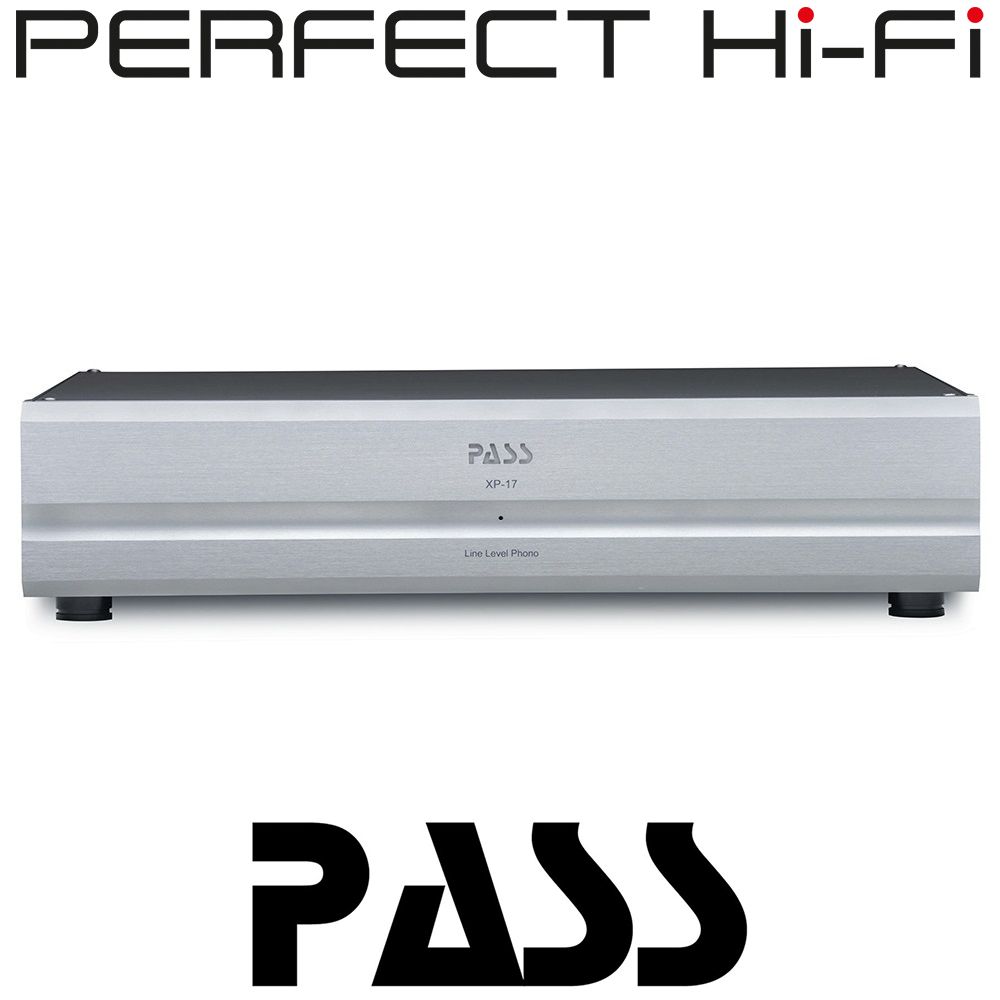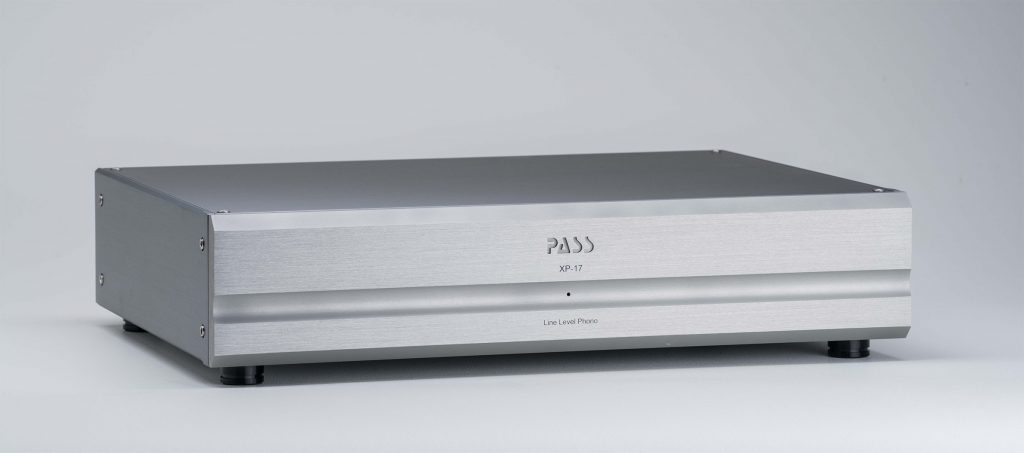
Quietly Musical
That was my initial thought when I listened to the Pass Labs XP-17 Phonostage for the first time. Yes, quiet and musical, is an apt description. But there must be more. After all, this is not some run-of-the-mill update. This is a new product in the Pass line. That does not happen all that often.
In 2016, I had the distinct pleasure to review the XP-15 Phono Stage (HERE). In short, I loved it. It is a terrific phono preamp. I remember wondering, if the XP-15 sounds this good, what must even better sound like? Given that my analog front end is a solid, (and hopefully) run-forever overachiever—like a nice Honda Accord—it was unlikely I'd ever hear an XP-25, or dreaming bigger, an XS phono, in my home. I won't lie, getting to live with the XP-15 has been quite an audio thrill for me, so when I was told I'd be getting the new XP-17 for review, I was pretty darned excited. And then I kinda panicked, wondering how I'd treat this review if the new phono preamp was clearly better than one I'd just gushed about.
Crap. Problem. It is better. What a damn shocker!
The XP-15 is being replaced by the XP-17, and at $4300 dollars USD, the XP-17 is $500 bucks saltier. That should be the first clue that it sounds better than the XP-15. The most obvious question then is, what has changed that makes the XP-17 worth it? And when long-time Pass Labs designer, Wayne Colburn (the architect of Pass' phono stages, preamps, and the main man behind the INT's) decided to add a new phono stage to the Pass lineup, what did he think needed improvement?
In an email to me, Mr. Colburn explained, "The XP15 has been in production since 2008 and was based on the Ono and X Ono that go back to about 1995. So time was part of the issue but also the XS phono set the bar higher for us and we wanted to transfer some of this circuitry into the rest of the line. We try and not change just to change but to offer significant improvement in the sound…"
Significant. Yes.
Mr. Colburn's comments are anything but hyperbole. It's pretty easy to hear the difference from the first needle drop. But the XP-17 looks beautiful too; it's gorgeously streamlined casework courtesy of Pass Labs President, Desmond Harrington's industrial design expertise. Operationally, the 17 is slightly simpler to use with the removal of dedicated inputs for MC and MM. But it is Wayne Colburn's circuit and power supply revisions that allow the XP-17 to sing at a new level of sonic performance.
A Little Tech
Paraphrasing Pass Labs website, the XP-17 uses a more robust power supply, with lower radiated and mechanical noise. This is achieved by adding a new shielded, low noise toroid and input filter, along with an additional stage of RC filtering. The XP-17 features a new symmetrical input circuit that further reduces noise and increases drive. The addition of a split EQ network, trickled down from the XP-25 and XS phono stages, ensures greater accuracy and allows for greater signal levels; and the second stage runs a higher bias output stage with auto bias.
The fully balanced XP-17 retains the now familiar resistive and capacitive loading options (changed via 8-way dip switches mounted on the rear), and offers three gain settings to allow the use of Moving Magnet or Moving Coil cartridges. And as I mentioned earlier, Pass managed to simplify the input connections on the rear of the unit by using the same input for both MM and MC cartridges rather than the specific inputs used on the XP-15.
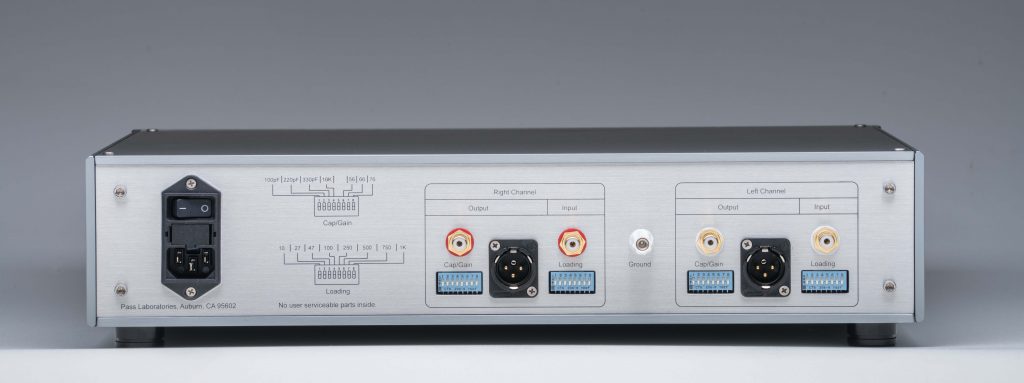
From the Pass Labs XP-17 User Manual: "The XP-17 has a very accurate RIAA equalization curve. This curve is accurate to better than 1/10 dB across 10 octaves. The accuracy of this curve does not vary with an adjustment change of gain or cartridge loading.
The XP-17 features gain adjustable from between 56dB and 76dB; a range sufficient to allow successful operation of not only high output moving magnet cartridges, but also the lowest output moving coil cartridges without the use of an auxiliary step-up transformer. This extremely low noise / high gain structure of the XP-17 is capable of cleanly and quietly delivering in excess of 0.5V line level signal output with a phono cartridge input of 80 micro-volts. These are some of the best performance figures in the industry, and spectacular for a piece at this price point."
The gain settings for balanced and unbalanced are somewhat different (see the specs at the end of this review for more information), and since I was running unbalanced, the middle 60dB gain setting was perfect for the .6mV output of my Lyra Delos. After a few months of experimentation, I settled on a resistive load setting of 200 Ohms. Perfect. Wonderful. Quiet.
A Beautifully Immersive Sonic Experience
In my case, cooperative interaction is a huge part of the XP-17 equation. The 17's partnership with the Pass Labs INT-60 Integrated amplifier (on loan for this review), is a thing of synergistic beauty, and the whole system mates incredibly well with my Lyra Delos. It should be noted that I have previously run the XP 15 with this same system, so I have a baseline of comparison, and in fact, I stand by the comments in my original XP-15 review, especially as it pertains to the INT-60 as a partner.
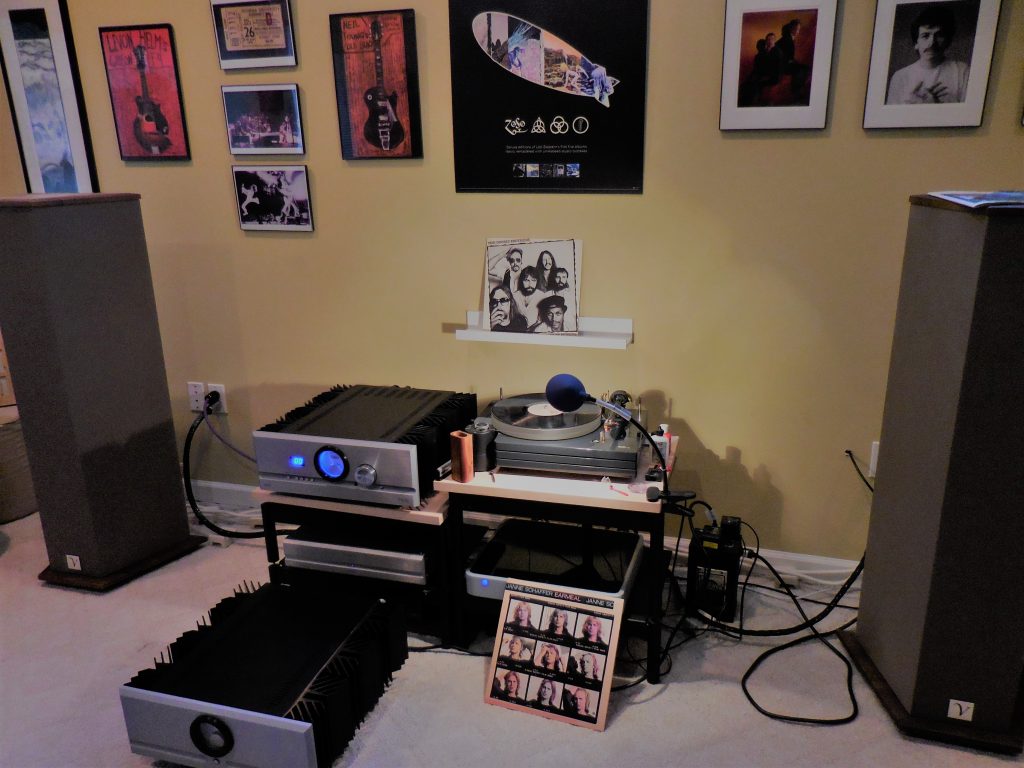
The Delos is neutral, extended, detailed, and powerful. It will remind you if you are listening to a poor recording. My Wright WPP100C phono preamp tames bad sound with glowing tubes, but the trade off is slightly less resolution, detail, and frequency extension. The XP-15 is clearly superior to the Wright: It is much quieter than the tube unit, providing a much more detailed presentation with an obvious increase in frequency extension, and adds slam and resolution while keeping stridency in check. The XP-17 is significantly quieter than the XP-15, has even more dynamic drive, and an improved musical flow, all without a hint of stridency.
From my listening seat, with the XP-17 plugged in, a quiet, well-recorded record is effectively silent between tracks. There is blackness in the space between musical notes that is quite noticeable. The XP-17 builds on the 15's many virtues with even greater levels of inner resolution, incredible separation, and a complete lack of mechanical-ism. As good as it is, the XP-15 cannot match the musical ease with which this new Pass phono stage recreates a recording. With an appropriately awesome record, the XP-17 can suspend reality for 20 minutes or so (then you gotta flip). I will admit, I don't personally own many records that sound that effing fantastic; however the few I do, like my copy of Analogue Productions 45 RPM 200-gram reissue of The Door's The Soft Parade, are an amazing treat.
But.
I have far more records that are just a little better than scratchy, bass-shy, compressed throwbacks to smokily distilled seventies nights with my friends. And I love ‘em. Yep, I do...You too? Yes, audiophiles may cringe when I discuss the merits of listening to The Best of Delaney and Bonnie through the XP-17. Its rockin', rollin', horn-tootin', soulfully countrified rock and roll sounded just exactly that, but with an additional measure of real high-fidelity. And while never to be confused with a high quality mastering bucking for audiophile approval, the live songs were especially exciting, and relevant. But then again, perhaps that is something only you and I know. Ahem. Moving on to albums of marginally better recorded quality, like the Doobie Brothers' Livin' on the Fault Line, and Minute by Minute. Van Morrison's Wavelength and Jethro Tull's Warchild. And I can't forget my spin of 1974's fantastic The Souther/Hillman/Furay Band. It's a country-rock royalty showstopper. I found every groovy side sounding better than I'd ever heard them, with amazing clarity, wonderful bloom, and serious bass authority.
I was quick to hear wonderful liquidity, and balance in the XP-17's sound. Mid-range is nothing short of glorious, and there is a definite improvement from the XP-15 in air around the notes, and dimensionality of the stage. It is fast and dynamic too: one minute the XP-17 can be lushly intimate, suddenly driving to big and majestic. Every Good Boy Deserves Favor is not my favorite Moody Blues recording, but after scoring a pristine copy in the dusty-darkness of the three-dollar bin, I cleaned it, and took it out for a spin. The sense of three dimensions and dynamic scale was exhilarating. Separation was magical, and there was a lovely tonal warmth that seemed closer to triodes than solid-state, yet without a hint artificial sweetness.
I love progressive jazz-rock. One of my favorites is Swedish guitarist, Janne Schaffer's 1978 release Earmeal. As with the other good recordings, I noted terrific separation, and a seemingly picture-perfect delineation of performers in space. And there was serious drive too... fast transients and crashing crescendos. The XP-17 acquitted itself wonderfully on this guitar prog-fusion, maneuvering through the minefield of studio compression and slightly truncated treble to serve up a highly musical rendering; dynamic as hell, clear as a bell, and bass to the basement. And goodness gracious me, I can't forget my original 1970 pressing of Yes' Time and a Word. Time? About 40 total minutes. Word? Transcendental. Yes.
Well done, Pass Labs. A salute to you, Mr. Colburn.
Honestly, I wouldn't doubt my turntable is incapable of wringing all the exceptional sound out of the XP-17 phono stage. But even with electronic trappings of modesty, it's really great, and fun, to listen through it. There is certainly a point when I notice the vinyl isn't up to snuff, but that doesn't mean there is no enjoyment in spinning crappy recording after crappy recording; ah contraire mon ami, lesser records still have a riveting sound.
The XP-17 has one of the rarest attributes of an audio component; the ability to remove itself from the audio chain. While it is hard not to notice its beautiful satin aluminum face, dotted in the middle with a glowing blue light, I rarely think about how it sounds anymore. I hear its drive. And the deep, wide stage. And the faithful recreation of beloved records I've heard many times over. Only now, they sound less like recordings, and even more like music. The improvements that Wayne Colburn and Pass Labs have made in the new XP-17 make the additional $500 bills a non-factor. If you are looking for a phono stage in the XP-17's price range, you simply must audition it.
Pass(ing) the Baton
If you've followed my journey into the ever-higher levels of vinyl playback sound quality, you are aware that I am squarely on the value side of high-end turntables, and hi-fi in general. "Value" in high-end audio does not mean cheap, but in a hobbyist world where even the entry-level can be expensive, I've managed to find some very sweet audio-spots. I have tweaked what I own to coax performance beyond what most audiophiles would expect from my analog gear. Yet it wasn't until I installed the Pass XP-15 phono stage that I truly heard what the vinyl-fuss is all about. It has been a rock-solid performer ever since first tethered to the Tune Saloon equipment rack. I never expected the XP-17 to be so much better, but it is. It's analogous to my comparison of the Pass XA 30.5 amplifier to its superseding spawn, the XA 30.8. They were both great, but the progeny was better. In the case of the XP-15 and 17; both phono stages are wonderful performers, and anyone should be proud to own either. But in the end, it's the XP-17 that wins the argument in my house.
It may be a tired old song, but to me, the major difference is the lower overall noise, which is the catalyst for all the other additional goodness the 17 serves up. The additional drive, resolution, and transparency is fantastic, but beyond that, it has even more musical soul.
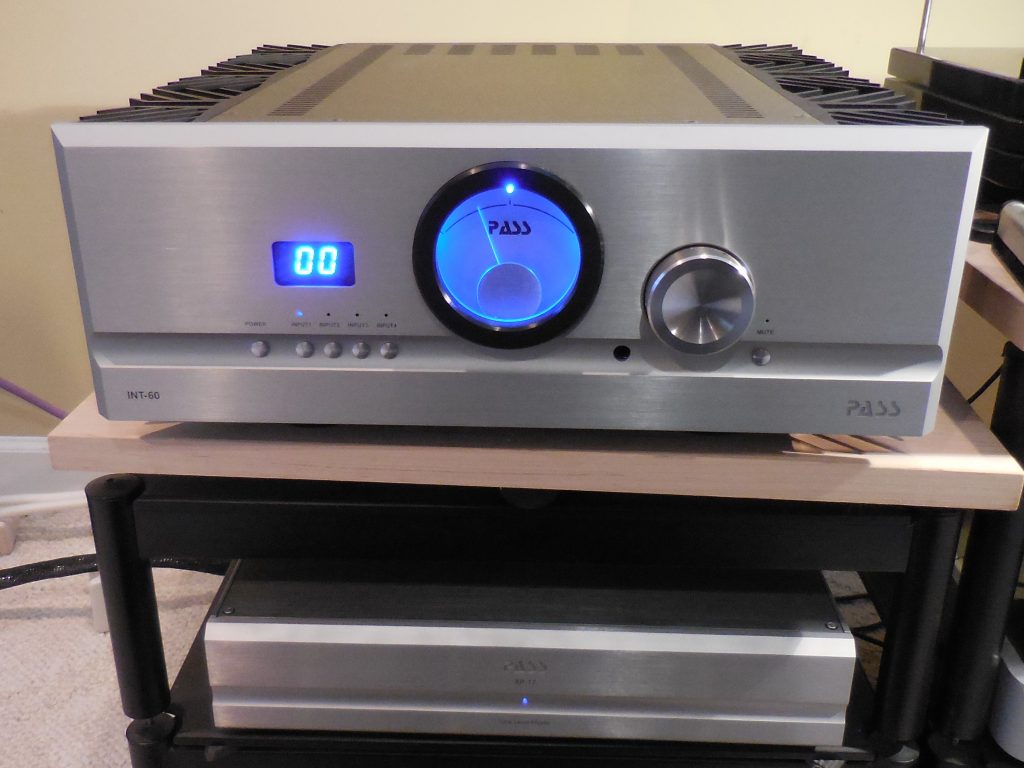
But there is one more thing: Playing LPs through the XP-17 via Pass Labs amazing INT-60 integrated amplifier allows my Von Schweikert VR-35 loudspeakers to sing a musical disappearing act, leaving nothing but a smile on my face. It's really rather difficult to think there are phono stages that eclipse the XP-17, because honestly, I don't know how my vinyl playback system could sound any better.
Now, if you will please excuse me, I'm off to spin some shiny black circles...
Pass Labs XP-17 Phono Stage
Retail Price $4300
Pass Laboratories Inc.
13395 New Airport Rd., Suite G
Auburn, CA 95602
530.878.5350
XP-17 Specs
- Power consumption: 40 Watts
- Gain: 76, 66, 56 dB balanced
- 70, 60, 50 unbalanced
- output impedance: 110 Ohms RCA
- 220 Ohms balanced
- input impedance: 10 - 47K Ohms more than 200 values
- Capacitive loading: 10 -750 pF
- RIAA curve accuracy: +- .1 dB 20 - 20 KHz Passive / Active EQ
- Distortion and noise: .004%
- Dimensions: 17"w x 12.5"d x 4"h
- Weight: 19lbs
No review found.
Please Login to post review.


